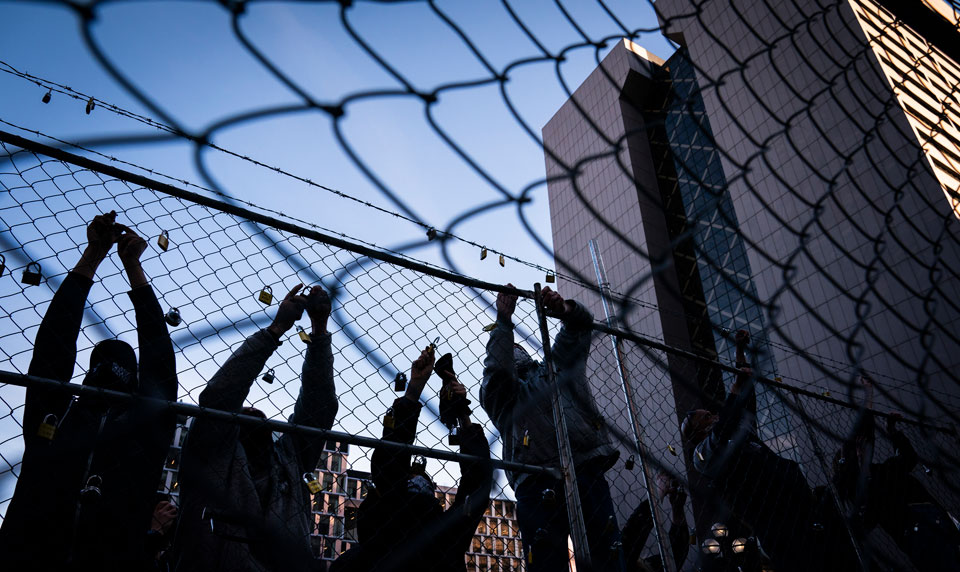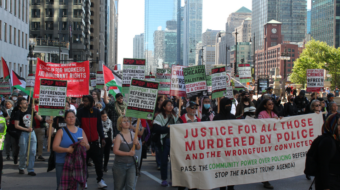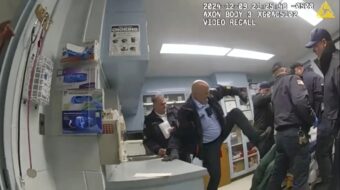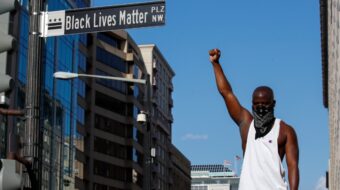
MINNEAPOLIS—As the March 29 evidentiary phase of the Derek Chauvin trial for the murder of George Floyd approaches, two legal issues loom large. In delivering his ruling on a series of motions Friday, the presiding judge, Peter Cahill, laid out the first, saying “Clearly there is a cause of death issue here, in fact, it is highly contested.” The second “highly contested” issue is whether or not Chauvin and the other three MPD officers charged in Floyd’s death acted in accordance with the protocols and training of the Minneapolis Police Department.
The prosecution will argue that the cause of death was what Cahill in the hearing abbreviated as “positional asphyxia,” caused by the neck restraint used by Chauvin as he pressed his knee into Floyd’s neck for nearly nine minutes. Experts for the defense are expected to argue that Floyd died from a drug overdose and associated cardiopulmonary disease—not the restraint of Chauvin and the two other officers, one pressing into Floyd’s back and another holding his legs.
As expected Friday, Cahill denied the defense motion for a change of venue and any continuance (delay) of the trial. “I don’t think there is any place in the state of Minnesota that has not been subjected to extreme amounts of publicity on this case.” Furthermore, he noted that media publicity about the trial will continue so moving the trial to some future date will not result in a fairer trial for the defendant as the defense argued.
Cahill also severely limited a defense motion that argued for admitting into evidence a May 6, 2019, incident in which MPD officers approached Floyd sitting in a vehicle when they suspected he was dealing drugs. Officers also allege that in that incident and on the day Floyd died, May 25, 2020, that he ingested drugs in his possession in order to avoid being arrested.

Cahill ruled that the only admissible portion of the May 6 officer-worn body camera video is that showing officers approaching the vehicle up until Floyd is out of the car. He also allowed testimony of the paramedic that was called to the scene, but only that which pertained to Floyd’s medical condition.
Cahill turned down the prosecution argument for admitting a forensic psychiatrist’s evaluation of the video of Floyd’s May 25 arrest assessing his stress and mental state. Cahill specifically said that includes Floyd’s mental state as he pleaded with the officers that he was claustrophobic and feared being placed in the backseat of a squad car. Indeed, his resistance to complying with the officers led them to restrain him on the ground. As Cahill noted previously in court, such state of mind claims are not admissible by either party.
Cahill differentiated issues of state of mind from behaviors. It was Floyd’s behavior “that the officers in both cases were required to deal with.” The question for the jury will be whether or not the officers did so appropriately and in accordance with MPD protocols and training.
However, what cannot be raised in court is whether or not the protocols and training themselves give wide leeway to officers to violate people’s rights and common dignity. Videos of Floyd’s arrest and his death raise an obvious question—whether MPD policing practices, protocols, and training should themselves be on trial. This is the trial that the movement to end police violence is conducting.
What is often lost in the courtroom is that a conflict over a $20 bill’s authenticity ended in the police killing someone in their custody. Did the officers ignore the MPD protocols and training? Or, are the MPD’s protocols and training complicit in Floyd’s death?
The character of the defendant and his cruel, inexcusable treatment of George Floyd has been deemed morally repugnant even by many law enforcement officials around the nation. However, jurors are asked to set aside their judgment and opinions and focus only on what they hear and see in court and judge Chauvin according to the law as given.
It is a reminder that the law does not always render justice, especially in cases of police violence and use of deadly force, as the laws are written to favor police by acts of Congress and state legislatures. The final jurors and alternates seated will struggle with what they might personally perceive as callous disregard for Floyd’s life and these two issues that loom large in this trial.
As court recessed Friday, 13 of 16 jurors the court is seeking were seated. Three are Black men in their 30s and 40s, two of whom are immigrants, five white women in their 40s and 50s, two women identified as mixed-race, one in her 20s and the other in her 40s, and a Black woman in her 60s, who once lived in South Minneapolis where George Floyd was killed. The search for the remainder resumes this week.










